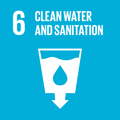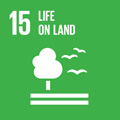- Docente: Simone Ambretti
- Credits: 8
- Language: Italian
- Teaching Mode: Traditional lectures
- Campus: Bologna
- Corso: Single cycle degree programme (LMCU) in Medicine and Surgery (cod. 8415)
Learning outcomes
At the end of the course, the student will know:
- general characteristic of bacteria, viruses, protozoa, fungi and parasites
- routes of transmission
- the establishment of pathogenic host-parasite interaction
- incubation period
- the role of immunity during the course of infection
- the meaning of production of infection and production of disease
- the diagnosis of infection (direct and indirect). Collection of specimens, request for testing, tests employed, interpretation of tests
- basic concept of prophylaxis and therapy
- principle of treatment. Antimicrobial drugs and mechanism of resistance
- most relevant bacteria (focusing on their characteristic, mechanism of action, symptoms, diagnosis, therapy, available vaccine)
- most relevant viruses (focusing on their characteristic, mechanism of action, symptoms, diagnosis, therapy, available vaccine)
- most relevant protozoa, fungi and parasites (focusing on their characteristic, mechanism of action, symptoms, diagnosis, therapy, available vaccine).
Course contents
A.A. 2022/2023
Antonella Marangoni
Medical microbiology. Manifestations of infection. Microbial causes of infection. Bacteria, viruses, protozoa and human infection. How microorganism cause diseases.
Immune response during the course of infection. Principles of direct and indirect diagnosis. Vaccines and gammaglobulins.
Bacteria. Structure, metabolism and reproduction. Spores and their meaning, bacterial genetics, mechanism of action antimicrobial drugs, mechanism of bacterial resistance. Diagnosis of bacterial infections.
Staphilococcus, Streptococcus pyogenes, Streptococcus pneumoniae, Streptococcus agalactiae, Bacillus, Lysteria monocytogenes, Mycobacterium, Neisseria, Enterobacteriaceae, Helicobacter, clostridia (Clostridium tetani, Clostridium botulinum, Clostridium difficile), spirochetes, Chlamydia, Legionella, Bordetella.
Protozoa. Giardia intestinalis, Trichomonas vaginalis, Leishmania, Amoeba, Plasmodium, Toxoplasma gondii.
Fungi. General characteristics of fungi. The most important fungal infections for humans. Yeast (Candida albicans e Candida spp), Pneumocystis carinii, Cryptococcus neoformans. Mould (Aspergillus spp).
Viruses. Classification, structure and replication cycle (DNA and RNA viruses). Pathogenesis mechanisms. Diagnosis of viral infections. Antiviral drugs and Interferon.
Orthomyxovirus, Paramyxovirus, Enterovirus (Poliovirus, Coxsackievirus), Rubivirus, Papillomavirus, the etiologic agents of primary hepatitis viruses (HAV, HBV, HCV, HDV, HEV, etc), Arbovirus, Coronavirus, Herpesvirus, Retrovirus.
Readings/Bibliography
Michele La Placa. Principi di Microbiologia Medica. XIV Ed.
Teaching methods
During classes, the hot topics will be discussed with the students.
Assessment methods
Oral examination. At the end of the course, students must know the general characteristics of bacteria, viruses, protozoa, fungi and parasites, the mechanisms of pathogenesis, routes of transmission, microbiological diagnosis, therapy and vaccines.
Teaching tools
In-class lectures will be supported by slides. Most of the slides will be available online (on virtuale website) before the beginning of the course.
Office hours
See the website of Simone Ambretti
SDGs




This teaching activity contributes to the achievement of the Sustainable Development Goals of the UN 2030 Agenda.
